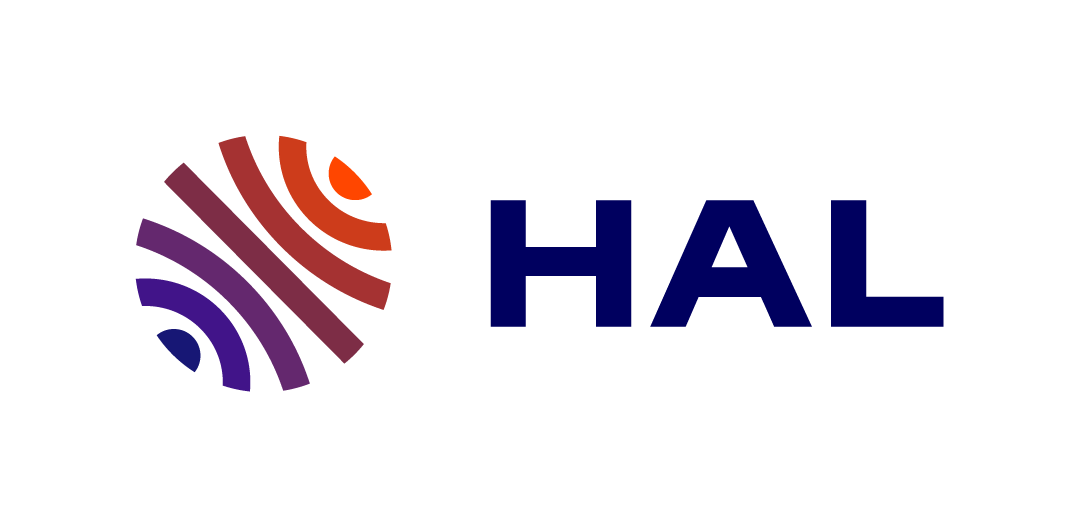 | IHPE UMR 5244 Université de Perpignan via Domitia 52 Avenue Paul Alduy F-66860 Perpignan Cedex Tel +33(0)4-68-66-20-50 Fax +33(0)4-68-66-22-81 email: julie.clement@univ-perp.fr |
|---|
GRADE : Chargée de Recherches CNRS
EQUIPE : 2MAP
ENCADREMENT DE THESE ACTUEL :
Amélie RUDLER (2023)
RESEAUX SOCIAUX SCIENTIFIQUES :
| Orcid | HAL | Research Gate | Scopus Preview | Google Scholar | Linked In |
| Lien | julie-clement62 | Lien | Lien | Lien | Lien |
DOMAINE D’EXPERTISE-RECHERCHE :
Mon parcours scientifique s’est construit autour d’un intérêt marqué pour l’évolution des populations et leur adaptation à leur environnement. Durant ma thèse, j’ai développé des compétences en écologie évolutive et en épidémiologie. Par des approches d’infections in vitro et de biologie moléculaire, j’ai voulu comprendre l’effet de la résistance de l’hôte et de la compétition intraspécifique sur les traits d’histoire de vie d’un parasite (Phytophthora infestans) de la pomme de terre. Lors de mon ATER, j’ai développé des compétences à l’échelle du génome en recherchant les traces de sélection dans différentes souches géographiques d’un même parasite (Schistosoma mansoni). J’ai à la fois réalisé les expériences au laboratoire (infections, biologie moléculaire) et je me suis formée à l’analyse bioinformatique pour analyser les données issues du reséquençage de génomes (recherche de SNPs et CNVs, génomique des populations).
Depuis 2013, je travaille sur la régulation de la localisation des sites de recombinaison méiotique à l’échelle du génome (analyses bioinformatiques de données -omiques). Dans mes projets, j’ai exploré différents aspects du rôle de PRDM9, une protéine capable de diriger la machinerie de recombinaison à ses sites de fixation. Son rôle dans l’évolution des cartes de recombinaison et donc des génomes est intrigant, d’autant plus qu’elle aurait été perdue partiellement ou totalement plusieurs fois au cours de l’évolution chez les Métazoaires. Jusqu’à récemment, mes recherches étaient centrées sur le modèle souris mais je participe aujourd’hui à deux projets impliquant des espèces de poisson et j’ai rejoint l’IHPE pour développer un projet portant sur la recombinaison méiotique chez des invertébrés. Mon objectif est d’explorer le rôle de PRDM9 chez ces espèces en combinant différentes approches, et tester l’hypothèse d’une fonction de localisation des sites de recombinaison méiotique. Ceci me permettra ensuite de comprendre comment des modifications du génome (ex. élements mobiles) ou de la chromatine (ex. méthylation d’histones) causées par des perturbations environnementales peuvent impacter le processus de recombinaison méiotique, et donc les innovations génétiques qui en émergent.
En dehors des activités de recherche, je veille à diffuser et à encourager les bonnes pratiques d’analyse et de stockage des données et je milite pour une science plus ouverte et reproductible (principes FAIR).
CURSUS :
2022- CRCN CNRS (IHPE)
2019-2022 CRCN CNRS (Institut de Génétique Humaine, Montpellier)
2013-2019 Post-Doctorat (Institut de Génétique Humaine, Montpellier)
2011-2012 ATER (Université de Perpignan via Domitia)
2008-2011 Doctorat (INRA Rennes)
2004-2007 Ecole Nationale Superieure d’Agronomie et des Industries Alimentaires (ENSAIA Nancy)
2002-2004 CPGE BCPST (Lycée Faidherbe, Lille)
2002 Baccalauréat Scientifique
DERNIERES PUBLICATIONS:
Articles dans une revue
- Marie Raynaud, Paola Sanna, Julien Joseph, Julie A. J. Clément, Yukiko Imai, et al.. PRDM9 drives the location and rapid evolution of recombination hotspots in salmonids fish. PLoS Biology, 2025, 23 (1), pp.e3002950. ⟨10.1371/journal.pbio.3002950⟩. ⟨hal-04880059⟩
- Akbar Zainu, Pauline Dupaigne, Soumya Bouchouika, Julien Cau, Julie a J Clément, et al.. FIGNL1-FIRRM is essential for meiotic recombination and prevents DNA damage-independent RAD51 and DMC1 loading. Nature Communications, 2024, 15 (1), pp.7015. ⟨10.1038/s41467-024-51458-8⟩. ⟨hal-04686765⟩
- Alexandre Nore, Ariadna B Juarez-Martinez, Julie Clément, Christine Brun, Boubou Diagouraga, et al.. TOPOVIBL-REC114 interaction regulates meiotic DNA double-strand breaks. Nature Communications, 2022, 13 (1), pp.7048. ⟨10.1038/s41467-022-34799-0⟩. ⟨hal-04126103⟩
- Yukiko Imai, Mathilde Biot, Julie a J Clément, Mariko Teragaki, Serge Urbach, et al.. PRDM9 activity depends on HELLS and promotes local 5-hydroxymethylcytosine enrichment. eLife, 2020, 9, pp.e57117. ⟨10.7554/elife.57117⟩. ⟨hal-03765889⟩
- Melen Leclerc, Julie a J Clément, Didier Andrivon, Frédéric Marie Hamelin. Assessing the effects of quantitative host resistance on the life-history traits of sporulating parasites with growing lesions. Proceedings of the Royal Society B: Biological Sciences, 2019, 286 (1912), pp.20191244. ⟨10.1098/rspb.2019.1244⟩. ⟨hal-02352206⟩
- Frantzeskos Papanikos, Julie a J Clément, Erika Testa, Ramya Ravindranathan, Corinne Grey, et al.. Mouse ANKRD31 Regulates Spatiotemporal Patterning of Meiotic Recombination Initiation and Ensures Recombination between X and Y Sex Chromosomes. Molecular Cell, 2019, 74 (5), pp.1069-1085.e11. ⟨10.1016/j.molcel.2019.03.022⟩. ⟨hal-02359134⟩
- Boubou Diagouraga, Julie Clément, L. Duret, Jan Kadlec, Bernard de Massy, et al.. PRDM9 Methyltransferase Activity Is Essential for Meiotic DNA Double-Strand Break Formation at Its Binding Sites. Molecular Cell, 2018, 69 (5), pp.853 - 865.e6. ⟨10.1016/j.molcel.2018.01.033⟩. ⟨hal-01730632⟩
- Julie Clément, Bernard de Massy. Birth and death of a protein. eLife, 2017, 6, ⟨10.7554/eLife.29502⟩. ⟨hal-01631384⟩
- C Grey, Julie a J Clément, J Buard, B Leblanc, I Gut, et al.. In vivo binding of PRDM9 reveals interactions with noncanonical genomic sites. Genome Research, 2017, 27 (4), pp.580-590. ⟨10.1101/gr.217240.116⟩. ⟨hal-01505240⟩
- Julie a J Clément, T. K. Baldwin, Hélène Magalon, I. Glais, Cécile Gracianne, et al.. Specific detection and quantification of virulent/avirulent Phytophthora infestans isolates using a real-time PCR assay that targets polymorphisms of the Avr3a gene.. Letters in Applied Microbiology, 2013, 56 (5), pp.322-32. ⟨10.1111/lam.12047⟩. ⟨hal-00941608⟩
- Didier Andrivon, Josselin Montarry, Roselyne Corbière, Claudine Pasco, Isabelle Glais, et al.. The hard life of Phytophthora infestans: when trade-offs shape evolution in a biotrophic plant pathogen. Plant Pathology, 2013, 62, pp.28-35. ⟨10.1111/ppa.12164⟩. ⟨hal-01208699⟩
- Julie a J Clément, Eve Toulza, Mathieu Gautier, Hugues Parrinello, David Roquis, et al.. Private Selective Sweeps Identified from Next-Generation Pool-Sequencing Reveal Convergent Pathways under Selection in Two Inbred Schistosoma mansoni Strains.. PLoS Neglected Tropical Diseases, 2013, 7 (12), pp.e2591. ⟨10.1371/journal.pntd.0002591⟩. ⟨hal-00938922⟩
- Julie a J Clément, Hélène Magalon, Isabelle Glais, Emmanuel Jacquot, Didier Andrivon. To be or not to be solitary: Phytophthora infestans' dilemma for optimizing its reproductive fitness in multiple infections. PLoS ONE, 2012, 7 (6), pp.e37838. ⟨10.1371/journal.pone.0037838⟩. ⟨halsde-00728938⟩
- Christophe C. Delye, J.A.J. Clément, Fanny Pernin, Bruno B. Chauvel, Valérie V. Le Corre. Résistances aux herbicides, autant en emporte le vent. Phytoma la Défense des Végétaux, 2011, 644, pp.9-12. ⟨hal-02642209⟩
- J. A. J. Clément, Julie a J Clément, Hélène Magalon, R. Pellé, B. Marquer, et al.. Alteration of pathogenicity-linked life-history traits by resistance of its host Solanum tuberosum impacts sexual reproduction of the plant pathogenic oomycete Phytophthora infestans.. Journal of Evolutionary Biology, 2010, 23 (12), pp.2668-76. ⟨10.1111/j.1420-9101.2010.02150.x⟩. ⟨hal-00941636⟩
- Christophe C. Delye, Julie Clément, Fanny Pernin, Bruno B. Chauvel, Valérie V. Le Corre. Gene flow homogenises the evolution of arable weed populations at the landscape level. Basic and Applied Ecology, 2010, 11 (6), pp.504-512. ⟨10.1016/j.baae.2010.06.008⟩. ⟨hal-02663049⟩
Communications dans un congrès
- Cyril Guillemot, Richard Galinier, Jean-François Allienne, Anne Rognon, Cristian Chaparro, et al.. Exploring the diversity and evolution of a multigenic family of proteins involved in invertebrate immune response. 8e rencontres Bioinformatiques, IFREMER, Sep 2025, Sète, France. ⟨hal-05307747⟩
- Olivier REY, Christoph Grunau, Julie A. J. Clément. Biomphalaria glabrata, a new model to investigate the evolution of meiotic recombination (JULIE CLEMENT, ROUND TABLE SPEAKER). 17th International Symposium on Schistosomiasis "Perspectives for the elimination of schistosomiasis", Nov 2024, Salvador (Bahia), Brazil. ⟨hal-04883418⟩
- Amélie Rudler, Y.A. Tran Lu, Nicolas Bierne, Sophie Arnaud-Haond, Jean-François Allienne, et al.. Nanopore sequencing reveals the incredible haplotypic diversity of PRDM9 (AMELIE RUDLER, PRIX DE LA MEILLEURE PRESENTATION DES DOCTORANTS). 7ème Rencontres Bioinformatiques IFremer et Nanopore Marine Day, IFREMER, Sep 2024, La Tremblade, France. ⟨hal-04883965⟩
- Julie A. J. Clément. Where recombination takes place: Role and evolution of Prdm9 in meiotic hotspot localisation. 12e International Summer School Labex TULIP, Labex TULIP, Jun 2024, Germ-Louron, France. ⟨hal-04894012⟩
- Julie A. J. Clément. Where recombination takes place. Séminaires du Laboratoire de Biologie du Développement, Laboratoire de Biologie du Développement, Mar 2024, Villefranche-sur-mer, France. ⟨hal-04893982⟩
- Julie A. J. Clément. Du sexe pour créer de la diversité : mécanismes moléculaires et évolution d’un système contrôlant le brassage génétique chez les animaux. Journée DIPEE Occitanie/Semaine écologie environnement biodiversité, DIPEE Occitanie Dispositifs de Partenariat en Écologie et Environnement, Jun 2023, Montpellier, France. ⟨hal-04885613⟩
- Didier Andrivon, Josselin Montarry, Roselyne Corbière, Claudine Pasco, Isabelle Glais, et al.. The hard life of Phytophthora infestans : when trade-offs shape evolution in a biotrophic plant pathogen.. Conference European Fédération for Plant Pathology EFPP, Dec 2012, Norwick, United Kingdom. ⟨hal-03419848⟩
Poster de conférence
- Amélie Rudler, Julie Clément, Jean-François Allienne, Anne Rognon. Exploring PRDM9 function in invertebrates. Conférences Jacques Monod - SEX UNFOLDED: SEX, ASEX, SEXES, Sep 2023, Roscoff (29680), France. ⟨hal-04797782⟩
Chapitres d'ouvrage
- Pauline Auffret, Bernard de Massy, Julie Clément. Mapping Meiotic DNA Breaks: Two Fully-Automated Pipelines to Analyze Single-Strand DNA Sequencing Data, hotSSDS and hotSSDS-extra. Germ Cell Development, 2770, Springer US, pp.227-261, 2024, Methods in Molecular Biology, 978-1-0716-3698-5. ⟨10.1007/978-1-0716-3698-5_16⟩. ⟨hal-04474446⟩
- Pauline Auffret, Bernard de Massy, Julie a J Clément. Mapping Meiotic DNA Breaks: Two Fully-Automated Pipelines to Analyze Single-Strand DNA Sequencing Data, hotSSDS and hotSSDS-extra. Marco Barchi, Massimo De Felici. Germ Cell Development: Methods and Protocols, 2770, Springer; Springer US, pp.227-261, 2024, Methods in Molecular Biology, 978-1-0716-3698-5. ⟨10.1007/978-1-0716-3698-5_16⟩. ⟨hal-04769155⟩
Autres publications
- Amélie Dellong, Jean-François Allienne, Cristian Chaparro, Jeremie Vidal-Dupiol, Julie A. J. Clément, et al.. Mapping Histone post-translational modifications in the Pacific oyster using iDeal CUT&Tag and the Tissue Nuclei Extraction Module. 2025. ⟨hal-05338975⟩
Pré-publications, Documents de travail
- Marie Raynaud, Paola Sanna, Julien Joseph, Julie A. J. Clément, Yukiko Imai, et al.. PRDM9 drives the location and rapid evolution of recombination hotspots in salmonids. 2024. ⟨hal-04516336⟩
- Amelie Dellong, Manon Fallet, Pierre-Louis Stenger, Cristian Chaparro, Jeremie Vidal-Dupiol, et al.. Benchmarking of Chromatin Immunoprecipitation (ChIP-Seq) methods in the Pacific oyster Magallana gigas. 2024. ⟨hal-04869413⟩
- Akbar Zainu, Pauline Dupaigne, Soumya Bouchouika, Julien Cau, Julie Clément, et al.. The FIGNL1-FIRRM complex is required to complete meiotic recombination in the mouse and prevents massive DNA damage-independent RAD51 and DMC1 loading. 2023. ⟨hal-04237021⟩
Thèses
- Julie a J Clément. Stratégies de reproduction de l’oomycète hétérothallique Phytophthora infestans en réponse aux infections multiples et à la résistance partielle de son hôte Solanum tuberosum. Mycologie. Université Européenne de Bretagne; AgroCampus Ouest, 2011. Français. ⟨NNT : 2011NSARA069⟩. ⟨tel-04012750⟩

